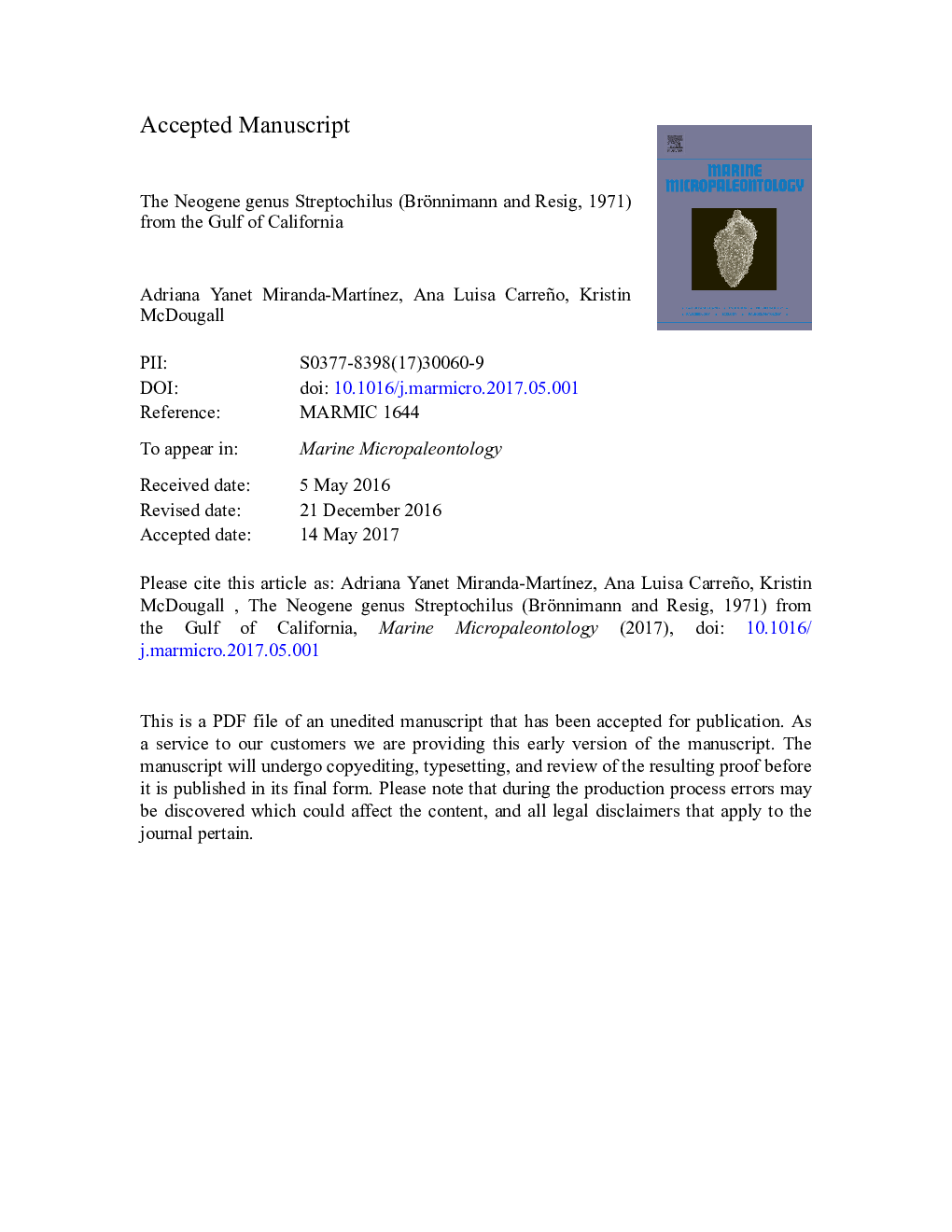| Article ID | Journal | Published Year | Pages | File Type |
|---|---|---|---|---|
| 5788186 | Marine Micropaleontology | 2017 | 59 Pages |
Abstract
Four species of the planktonic foraminiferal genus Streptochilus from key Neogene marine localities are documented in relation to the evolution of the Gulf of California: S. globigerus, S. latus, S. macdougallae sp. nov., and S. inglei sp. nov. Planktonic foraminiferal bioevents and strontium isotopes in the Bouse, Tirabuzón, Carmen and Ojo de Buey lithostratigraphic units constrain the local distribution range between 6 and 5.3Â Ma for the last three species, whereas S. globigerus appears locally at 5.5Â Ma and disappears between 3.79 and 3.46Â Ma in the Imperial and Trinidad Formations. The last occurrence of Streptochilus latus, and the first and last occurrences of S. globigerus in the ancient Gulf of California are correlated with bioevents calibrated in the equatorial Pacific; therefore, they can be used as reliable local biostratigraphic markers. The presence of Streptochilus in the ancient Gulf of California seems to correlate with upwelling, in a pattern similar to that observed in the modern oceans.
Related Topics
Physical Sciences and Engineering
Earth and Planetary Sciences
Palaeontology
Authors
Adriana Yanet Miranda-MartÃnez, Ana Luisa Carreño, Kristin McDougall,
